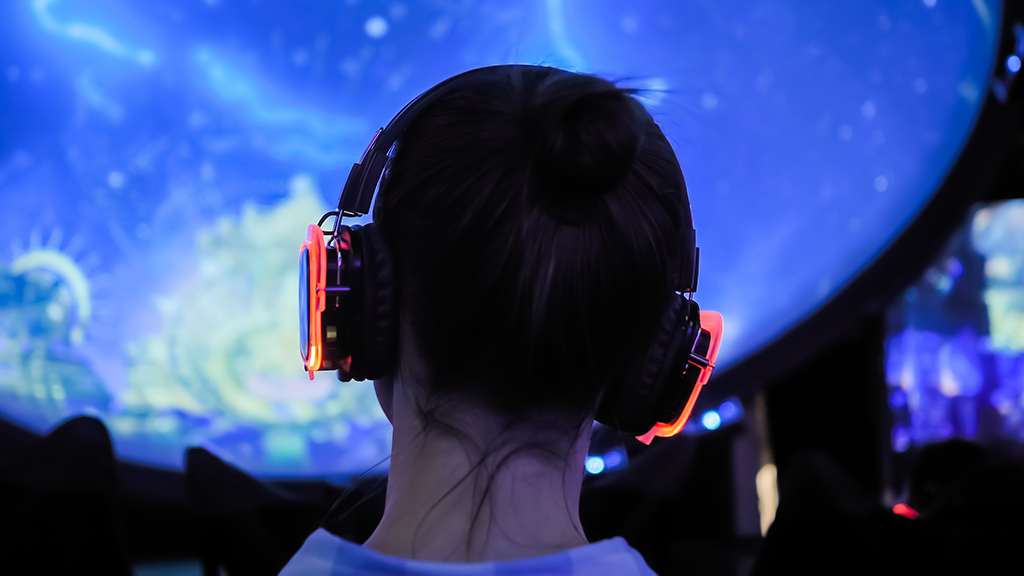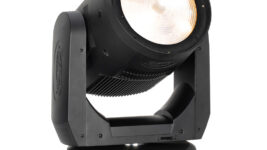LISTEN HERE
14 Apr 2025
Navigating The World With Two Ears

Subscribe to CX E-News
In the Australian music industry, there are those who see the future of immersive audio as inevitable, while others have quite literally never even heard the words ‘Dolby Atmos’ or ‘Spatial Audio.’ So what gives? Are we really heading into a future where immersive audio establishes itself as the ‘new stereo’ or could the whole concept once again evaporate in the sun like the failed quadraphonic format of the ’70s, or the 5.1 surround format of the ’90s?
Between these two commercial failures – quadraphonic and 5.1 surround sound – (along with others like DVD-A and SACD), the track record of the various forms of ‘immersive audio’ worldwide has not been good – others might call it downright disastrous – particularly in the music industry. Multi-speaker formats beyond stereo have repeatedly promised a revolution in audio before quietly falling back into obscurity, leaving a trail of economic hardship and cynicism in their failed wakes comprised mainly of those who championed the cause.
It’s no wonder then, in a world where music producers have become expert in the use of micrometers to carve up the tiny budgets of most recording artists, that there’s an extreme reluctance amongst the vast bulk of the music industry to accommodate ‘new mixing concepts’ that they neither understand nor value.
But immersive audio as a generic concept is not new, as we’ve already established. It’s been around in various forms for decades.
But, of course, when anyone states this fact it sends a shiver through the collective spines of those old enough to remember the hollow promises of immersive formats past. Justifiably, there’s a healthy scepticism out there in the pro audio community about ‘surround sound,’ and the question these sceptics inevitably ask goes something like this: “What makes this decade’s version of immersive audio any more likely to succeed, given its poor track record in consumer markets over the last 50 years?” To which I’d add a follow-up: “Who on earth could justify the huge disruption to their workflow, or the substantial economic and technical investment required to establish a 7.1.4 Dolby Atmos mix room (for example), when there’s no certainty around who would use it, where the mixes would be consumed, or if the format will even exist in a couple of years from now?” The ‘economic plan’ of ‘If I build it, they will come’ has proven idiotic in the past, so how would it be less foolhardy today?
Well, the main differences that cannot be underestimated today are two-fold. Firstly, unlike the past, today you don’t have to necessarily build anything to get involved in immersive mixing. You can start using the pair of headphones you already own (a concept that was science fiction 20 years ago, let alone 50). Secondly – and perhaps more importantly – consumers don’t have to invest in new equipment either.
In fact, there’s a strong argument for mixing immersively in headphones – particularly if you’re venturing into this field with neither the budget nor the space to build a physical control room – given that most consumers of immersive audio will themselves be listening binaurally in headphones.
This arguably opens the floodgates to immersive audio being consumed everywhere, and by everyone. If nothing has to be built, no habits need to be broken, no-one needs to invest in a dedicated room to consume it, nor possess the expertise required to set it up correctly, what could hold it back?
Well, there’s one thing that might, and that’s ignorance. From where I stand, the main threat to immersive audio’s adoption at the consumer level is education, although perhaps not amongst consumers themselves.
If engineers, producers and musicians around the world don’t see the value in it simply because they don’t understand it, then there will be nothing for consumers to listen to. In many ways it’s up to the audio industry itself to make the effort to understand immersive audio’s mechanics first and foremost, otherwise consumers have no hope.
So, let’s break some of this stuff down, shall we, and clear up a few myths along the way while we’re at it…
The Old One, Two
Two of the greatest fallacies I hear repeatedly in conversations around immersive audio, which are possibly the most deranged, glaring non-sequiturs in audio today are firstly that A: “We only have two ears, so why the need for so many speakers?” And B: “Immersive audio in headphones is physically impossible.”
Both statements are nonsense. I’ll start with the second one first.
Binaural listening in headphones can indeed accommodate immersive audio.
Fundamentally, this all boils down to both understanding and accepting that Head-Related Transfer Functions actually work … and yes, through a normal pair of headphones. If you don’t know what HRTFs are, or how they relate to binaural listening in headphones, in a nutshell, they’re a set of filters that simulate how a listener’s ears, head and torso influence their perception of sound in the physical world; cues that are present when we listen to speakers in a physical space but missing when a person listens in headphones.
Our bodies are masters at receiving and interpreting subtle sonic cues from the world around us and it’s these cues that help us determine the location, volume and distance of the myriad sound sources we’re immersed in, consciously or otherwise, every day. HRTFs aim to mimic these added spectral, time-and level-based differences to create the sense of a sound coming from above, below and behind us, as well as from side to side or in front of us.
Though Head-Related Transfer Functions are already a well-developed field of technology, their one-size-fits-all approach can often be less convincing to one person’s ears than another’s. This field is nevertheless advancing rapidly and will only grow more convincing as the years roll on. Personally, I find the current wave of binaural panners like dearVR MICRO et al already remarkably good at convincing my ear of three-dimensional space, and this will certainly improve with time, particularly if personalised head mapping is added to the equation, which promises to customise 3D panners specifically to each individual’s head. This will take binaural listening to a whole new level, I suspect.
In short then, it’s important for everyone in the audio industry to understand that listening immersively in headphones is an established fact… not something we should debate the veracity of for the next 10 years.
Returning to our first fallacy: that we only have two ears, so why have more than two speakers? This is a patently nonsensical thought process that fundamentally misunderstands the physical world around us and our perception of it. Sure, we only have two ears, but the number of sound sources we perceive from any given direction is incalculable. It’s absurd to conflate the number of ears with the number of sound sources, and yet that’s precisely what people infer when they foolishly pollute the air with this nonsense. What’s next? A rule which states that because we only have two ears there should only be two sounds in any given song? Man, this air is getting acrid…
Fear Of The Unknown
So, while listening binaurally to an immersive mix might not sound the same as listening to an identical piece of audio on a set of expensive speakers in a dedicated control room, the effect is nevertheless compelling, and technology is advancing in this field faster than an Icelandic lava flow.
You only have then to go back to a conventional stereo mix to hear how much the soundstage regresses. It’s like watching a movie on iMax, then returning home to watch it again on your TV in the loungeroom – underwhelming.
To me, the shift to immersive mixing is inevitable. On the one hand it seems complicated, involving a large learning curve that includes understanding the different deliverables and all the tedium that comes with that aspect of music production. But on the other, a whole new world is opening up that’s inspiring to anyone who appreciates fidelity, space, depth and the power of illusion.
If it’s a simple question of whether the shift to immersive is worthwhile sonically, on that score there’s no doubt. Immersive mixing is an almost miraculous upgrade from stereo, and to that end I’m a convert.
Another important reason why immersive audio looks far more likely to succeed this time around is that the push seems to be coming from manufacturers and consumers rather than audiophiles and mix engineers. You only have to see the number of car manufacturers installing Atmos systems in their new electric vehicles to know that. These new listening environments have the added bonus of demanding nothing of the listener – no setup skill, no technical knowledge – the car defines the space and the system is installed for you. This will pull our industry towards the format, rather than the format requiring us to impose it on consumers. The same is true of the gaming industry, which is lightyears ahead of the music industry in many respects. Here again, the listening environment has been fully democratised, with millions of kids in headphones – for good or ill – experiencing immersive audio without giving it a second thought. This fact alone is a game-changer, to my mind.
Whether, in the next 12 months, I find myself mixing only one album in Dolby Atmos 7.1.4 in Pro Tools, or 20, only time will tell. Either way, I firmly believe that immersive audio is here to stay this time around the sun, for the reasons outlined above, and I’ve already found myself discussing the process with clients, many of whom were hearing about it for the first time, but who have already given the idea the green light.
Time to get cracking.
Andy Stewart owns and operates The Mill in the hills of Bass Coast Shire, Victoria, and he’s also the new Editorial Director of mutech.media.
Subscribe
Published monthly since 1991, our famous AV industry magazine is free for download or pay for print. Subscribers also receive CX News, our free weekly email with the latest industry news and jobs.






